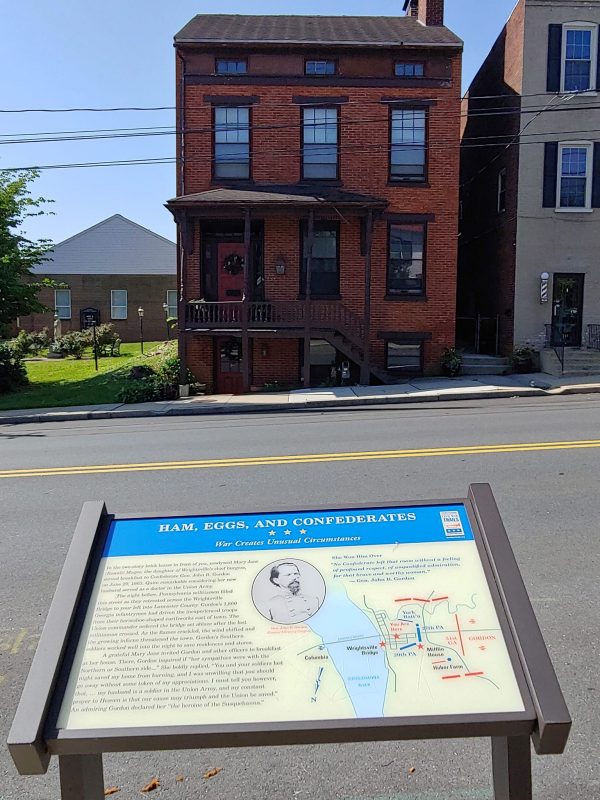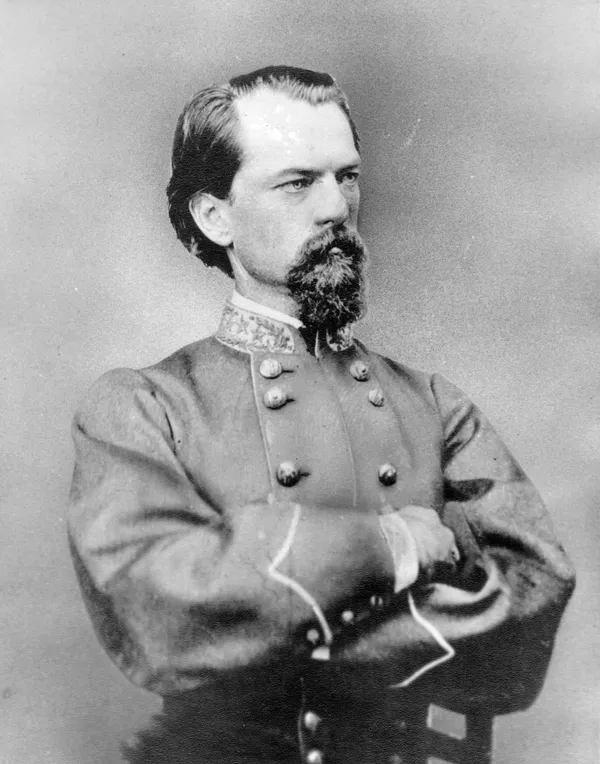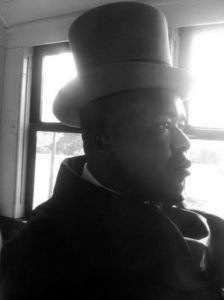One town, Three Civil War heroes
The situation
When Gen. Jubal Early’s division stepped onto York County soil in the days before the Battle of Gettysburg, York County residents met the Confederate Army in different ways:
Would they accommodate, or even welcome, the enemy? Would they acquiesce or show passive aggressive resistance in the face of the enemy? Or would they stand their ground and actively oppose the enemy?
Historians have uncovered examples of each. The decision by the leaders of York to seek out and surrender to the Confederates is an example of the first. The stoic manner in which Hanover’s leaders met a Confederate cavalry unit in the square of the undefended town marks the second option. And acts of heroism in Wrightsville and elsewhere represent the third option.
As for the surrender, businessman A.B. Farquhar had catalyzed the deal by seeking out the Confederates in Abbottstown, before they reached county soil, on June 27, 1863. Later that day, the town’s Committee of Safety sent delegates to Farmers, a village 10 miles west of York, to formalize the surrender.
So there’s an image of York’s leaders heading west to seek out the enemy to hand over the keys to the borough.
In his unauthorized trip to meet the Confederates, Farquhar no doubt was driven by several motivations. His own writings show that self-interest was one of them. When meeting a Confederate cavalry unit the year before, he inquired whether the Southerners planned to raid York. “I’m interested,” the York factory owner said, “because I have some property there.” About his meeting with Gordon in 1863, he wrote about his reason for seeking out the Confederates: “That we could make a good deal better bargain with them than we could after they saw how little of our property we had been able to move.”
Compare this self-interest in time of war to another scenario – actually at least 3 – that happened about 10 miles to the east in the small Susquehanna River town of Wrightsville.
The day after the surrender, Gordon’s brigade overwhelmed the outmanned Union defenders of Wrightsville and sought to capture its mile-long Susquehanna River bridge.
So we come to our three heroes:
- A Black worker who crossed the river from Wrightsville, dug defensive trenches and then took up arms against Gordon’s 1,800-man force. A shell from one of Gordon’s cannons decapitated this defender, whose name is unknown to this day.
- Another Black man, Jacob Miller, sat on the edge of a pier smoking a cigar, his life at risk. We coolness, he faced the charging Confederates straight on. He was assigned to lighting a fuse that would ignite explosives designed to drop a bridge pier in the water, thereby stopping the Confederate advance. (The stubborn bridge did not yield its span, so Union forces burned the bridge).
- The morning after the bridge went down, Mary Jane Rewalt, faced off with Gordon and a room full of Confederate officers. Her husband away in the Union Army, she invited Gordon to breakfast as thanks for saving her house from burning. Flames from the burning bridge had ignited the town, and Confederate soldiers helped put out the fire. “I must tell you …,” she told the Confederates, “my husband is a soldier in the Union army, and my constant prayer to heaven is that our cause should triumph and the Union be saved.”
Such decisions amid adversity define us as individuals and as a community.
Read more about the impact of this decision on York County history, including a return visit by Gordon 30 years later: Years after Civil War, York surrendered a second time to Confederates (ydr.com)

The witness
Historian Scott Mingus recently wrote about Mary Jane Rewalt and her heroism.
He begins:
“A famous Confederate general wrote a best-selling book after the Civil War in which he colorfully described a young Wrightsville, Pennsylvania, woman as ‘the heroine of the Susquehanna.’ Mary Jane Rewalt’s generosity, and particularly her spunk and bravery, left a lasting impression on former Brig. Gen. John Brown Gordon. The popular former governor of Georgia and Democratic U.S. Senator delivered lectures across the United States, including at York’s Opera House, on ‘The Last Days of the Confederacy.’ In these well-attended presentations, he often recounted the story of his wartime interaction with the memorable York County resident.”

Scott asks: “So, who was Mary Jane Rewalt and what about her impressed General Gordon so much?”
Here’s the rest of his story about this brave act:
The Heroine of the Susquehanna – Cannonball (yorkblog.com)
The questions
Put yourself in the the shoes of those in Wrightsville or elsewhere in York County at the time of the impending invasion. Which option would you have chosen? Would you accommodate the enemy to protect your property and your family? Would you acquiesce, but show passive aggressive resistance? Or would you stand their ground like the Jacob Miller, Mary Jane Rewalt, and the unknown man?
Related links and sources: Scott Mingus’ “Flames Beyond Gettysburg,” and James McClure’s “East of Gettysburg.” A.B. Farquhar’s autobiography: “The First Million The Hardest.” Gordon photo, YDR files; Other photos, courtesy of Scott Mingus.
— By JAMIE NOERPEL and JIM McCLURE



